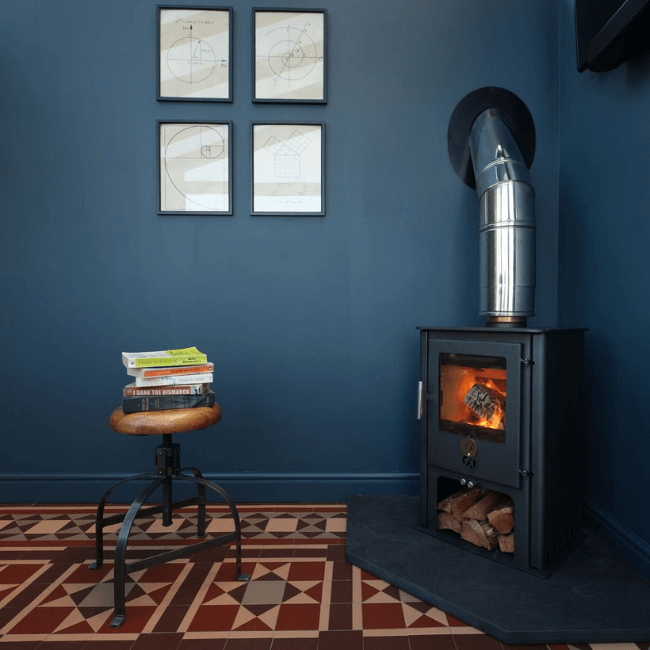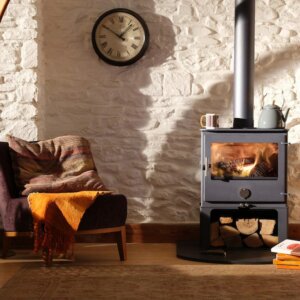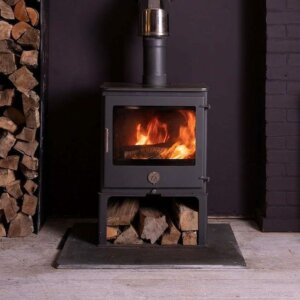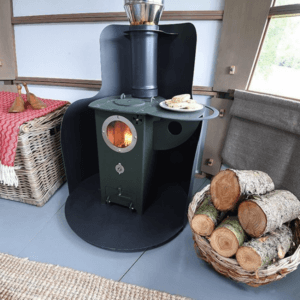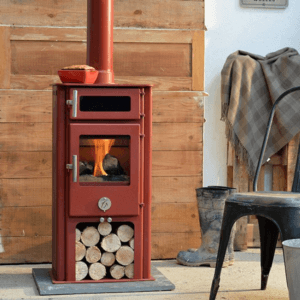This stove has the same fire box as the Short Penguin but it has grown in height and girth. The Chubby has an integral plinth which gives it the additional height and side convector panels which give it the extra width.
How do convector stoves work? These stoves are often chosen for their appearance and large top plate, which offers a wider surface for placing a kettle on. However the convector panels also have another purpose, they cause heat to move in a different way, making these stove particularly effective for heating large, well insulated rooms.
As hot air created by heat from the stove’s bodywork expands, it becomes lighter than the air outside the stove and rises up inside the
convector panels, exiting from the top of the panels. This is replaced by cooler heavier air drawn in at the bottom of the panels, which is in turn heated. The warmer, lighter air will fill the room while the colder, heavier air being drawn in at the bottom of the stove will create a continuous heat cycle, which gently moves air around the room.
The Chubby Penguin Eco is an Ecodesign stove. It uses a combination of three new clean burn features to achieve lower emissions and over 80% efficiency. Secondary heat retaining glazing has been introduced. The combustion air jets have been redesigned and air flow diversion has been introduced.
The combination of these new features mean that the temperatures in the firebox are higher resulting in a more efficient burn of the fuel. In addition the combustion gases remain in these higher temperatures for longer which causes more complete burn of the gases resulting in less harmful emissions and less particulates. stoves.
In order to be an Ecodesign stove, a stove must be independently verified to meet stringent emission requirements. Particulates or PMs are the most commonly recognised of these measures. The maximum limit for these is 40 mg/m3. This stove achieves 36 mg/m3 burning wood and 15 mg/m3 burning smokeless fuel. All other measures are all listed in our technical details table below. Click here for further Ecodesign info.
